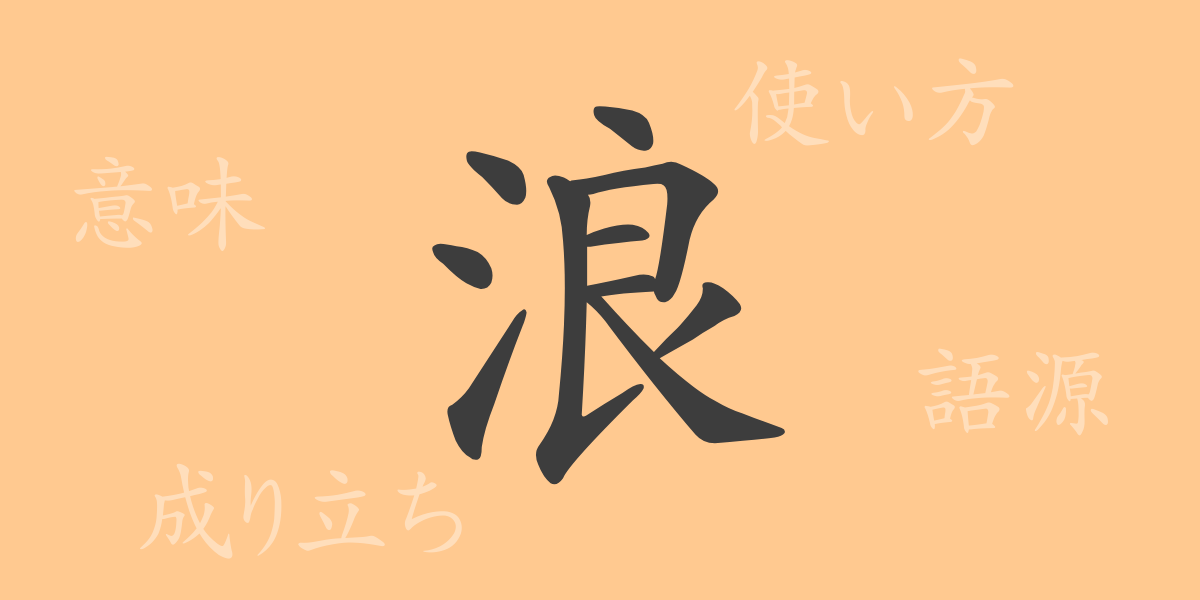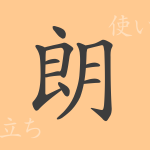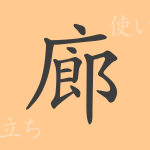The rich meanings and history encapsulated in a single kanji character symbolize the depth of Japanese culture. The commonly used kanji in Japan, “浪” (rō), is no exception. In this article, we delve into the origins, meanings, usages, readings, and idiomatic expressions involving the kanji “浪” (rō). Ride the wave of “浪” (rō) and discover its full allure.
Origins of 浪 (rō)
The kanji “浪” (rō) is composed of “氵” (sanzui), representing moving water, and “良” (ryō), which signifies movement. It first appeared in ancient China to denote water waves and later came to refer to wandering like waves. This character symbolizes the powerful and shapeless movement of flowing water and has been used in numerous literary works throughout history.
Meanings and Usage of 浪 (rō)
The primary meaning of “浪” (rō) is water waves or billows. Metaphorically, it is also used to signify wandering or wastefulness. For example, “浪速” (Naniwa) is another name for Osaka, depicting the city’s vibrant atmosphere like waves. In terms of usage, it can refer to natural phenomena as in “浪花” (naniwa) or relate to human life and actions as in “浪人” (rōnin).
Readings, Stroke Count, and Radical of 浪 (rō)
The kanji “浪” (rō) shows how its readings and form are integrated into Japanese language and culture.
- Readings: On’yomi (音読み) is “ロウ” (rō), Kun’yomi (訓読み) is “なみ” (nami)
- Stroke Count: 10 strokes
- Radical: 水 (sanzui)
Idioms, Phrases, and Proverbs Using 浪 (rō)
Many idioms and phrases that include the kanji “浪” (rō) reflect its dynamic nature. For instance, “浪人生” (rōninsei) refers to someone who has failed university entrance exams and is preparing for another attempt. “浪費家” (rōhika) describes someone who wastes money. In proverbs, “浪速の商人” (Naniwa no shōnin) praises the agility and business acumen of Osaka merchants.
Summary of 浪 (rō)
The kanji “浪” (rō) encompasses more than just a natural phenomenon; it is deeply intertwined with Japanese life and emotions. Symbolizing the ever-changing world like water waves, “浪” (rō) continues to influence our thoughts and culture through language. We hope this article helps you rediscover the history and meanings embedded in each kanji character.

























